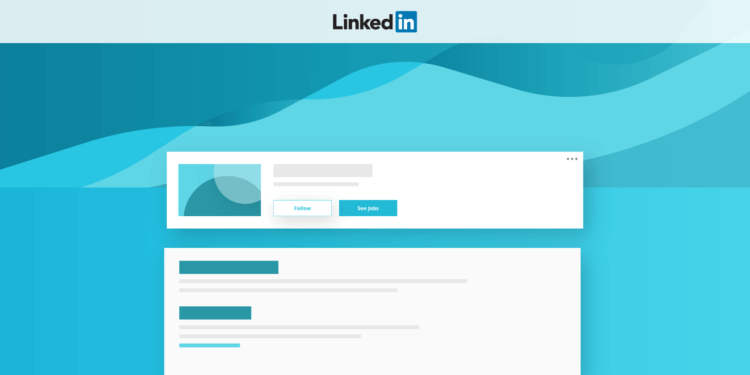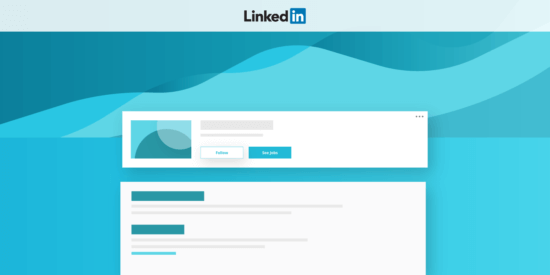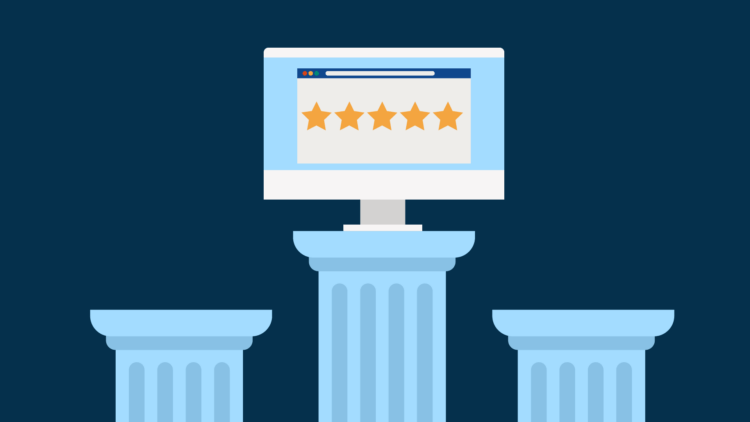LinkedIn for lawyers is one of the most powerful social networking tools available, thanks to its unique concentration of professionals prepared for networking. According to the American Bar Association’s Legal Technology Survey, nearly 76% of law firms use LinkedIn.
Colleagues and potential clients are turning to LinkedIn as a source of information on lawyers and firms, making LinkedIn a crucial place to curate the most flattering professional profile possible.
Social Media Marketing for Lawyers
The average time each individual person spends on social media platforms has been on an upward trajectory for over a decade. It’s time for you to capitalize on this by investing in your social presence! LinkedIn offers lawyers a simple and effective way to focus their marketing efforts.
As you’ve probably guessed, the way law firms engage with social networks is different from traditional B2C brands and even general consumers. In general, lawyers and law firms should be using LinkedIn to produce content that starts conversations by educating their target audience. This will boost engagement, establish the value of their law firm’s brand, and attract new clients.
The tips below are all LinkedIn best practices and have been carefully selected with the purpose of growing law firms, increasing their visibility, and expanding their personal reach—or getting hired by a larger firm if that’s your goal. Think of it this way: The more you network, the more likely you are to receive referrals. LinkedIn helps you create an environment of thriving professional legal connections, with minimal financial investment.
1. Use updated, professionally shot photos
It’s important to remember that the way to use LinkedIn is different from Facebook! Your professional connections are not interested in what you had for dinner, your take on last night’s game, or where you’ve been on vacation. The emphasis should always be on business opportunities and professionalism.
With this principle in mind, your LinkedIn profile picture and header image set the tone for how your target audience and professional contacts should think of you—it is your first impression online. That means no pictures of you wearing sunglasses, and no pictures of you on the beach.
Ideally, your profile photo should show yourself in professional attire, with a simple background and a friendly look. Don’t over-process your pictures with filters; simplicity is ideal. Your background photo can offer a bit more personality, but be mindful that the subject matter still fits with your professional persona, and doesn’t just show off a hobby.
Tip: Social media platforms are always making changes to their sites. Be sure to periodically check to see if their image specifications or profile layouts have changed.
You may like these posts
2. Write a compelling headline
After your photo, your profile’s headline is the second thing that people see when searching your name on LinkedIn. LinkedIn’s default setting is to populate your tagline with your current employment details, normally in the format of job title at current company/law practice. However, you can do so much better than this!
The purpose of the headline is to entice someone to click on your profile instead of another person’s, when your profile appears in the search results. The searcher will choose your profile if you give them a reason to!
Use your tagline to speak to the searcher directly, whether you’re looking to connect with clients or potential employers. Tell them what’s on your profile and let them know what to expect.
Tip: To boost the amount of searches your personal profile generates, and to get your profile in front of the right people, include legal industry related search terms to your tagline, e.g. ‘family lawyer’ or ‘personal injury attorney’.
3. When it comes to LinkedIn for lawyers, only list experience relevant to your current practice
A good marketing strategy always keeps it’s branding and messaging focused, and the way attorneys use their LinkedIn profiles should not be any different. If you’ve changed practice areas, or if you had a varied professional history before you focused on law, be sure to curate your profile accordingly.
If you’re trying to build a personal brand around being an top criminal defense attorney, nobody will be interested in reading about your early-career stints working in estate planning, or the classes you took in law school. This is because they don’t endorse your current skills or do anything to convince somebody to trust you with their case, it’s just noise.
You should choose career highlights that have directly led to your current practice and business focus, and make sure everything that appears in your professional history reflects your current experience and goals.
4. Invest time in writing your summary
A properly written summary will showcase you as a confident attorney. Since you’re creating a high level round-up of yourself as a lawyer, consider highlighting your achievements, values, passions, and what sets you apart.
Keep your summary clear and concise; only the first 200 or so characters of your summary will appear to someone using a desktop or laptop computer to see your profile (to see the rest, they need to click “See more”). Think of this as your elevator pitch—make sure to include pertinent milestones, minimize buzzwords, and be sincere. If you’re not confident in writing your summary on your own, you can choose to pay a writer with biography experience to draft one for you.
5. Write concise, yet meaningful descriptions of your professional experiences
Think of your LinkedIn profile as an online résumé or business development tool. Anybody who is thinking about working with you is going to be interested in your professional background, simply because they want to ensure they’re going to be in the most capable hands available.
Use the career history section of your profile to reassure any potential new clients. As we mentioned earlier in the article, it’s important to keep your skill set focused, but what’s also important is providing an easy-to-digest description of what you can do in general terms. Avoid confusing potential clients with densely written legal jargon, as this is likely to make them exit your profile and search for legal counsel they feel they can communicate with.
For those who have held similar positions in their career, avoid copying and pasting descriptions; it’s important to show as much professional growth as possible. Include links to firm pages, especially for your current firm, which you should ensure is up-to-date with details of how to contact for service inquiries.
6. Be careful about labeling yourself a specialist
In many jurisdictions lawyers are not permitted to label themselves as a specialist. Certain states have very specific protocols for becoming a specialist within an area of law, and the advertising rules surrounding specialization extend to every social network site.
A great feature of LinkedIn which provides unique value is the recommendations feature. LinkedIn offers your connections the chance to write a recommendation for you that you can then approve to put publicly on your profile. However, you need to monitor their language when they do this. Lawyers are responsible for meeting advertising requirements in their jurisdiction, so you cannot allow other LinkedIn users to label you as a specialist, no matter how tempting it may be. Keep an eye on the language of your profile recommendations, as well as skills and endorsements.
7. Import professional contacts from your email
Importing your connections from email is a fast and easy way to find connections you have already made. Once you give permission, LinkedIn will search your email account for addresses associated with accounts on LinkedIn, and you have the option of importing each contact at that time. It’s always good to aim for that magic number of 500 connections as it provides your account with an extra layer of credibility and authority.
Also, the great thing about social media in general is how it uncovers connections to people that we didn’t even realize we had. LinkedIn has taken this concept and applied it to your professional life.
Through 2nd and 3rd degree connections, you can see who is connected with connections you would like to meet, for example hiring managers, law school alums, or colleagues in a similar practice area. From there, you can reach out to your connection and ask them to set up an introduction or business lunch.
8. Install the LinkedIn app on your phone.
It’s all about mobility. With the LinkedIn app, you can respond to InMail (LinkedIn’s version of email) and reply to comments in a timely manner, all while being on the go. You never know what kind of connection will come from a LinkedIn conversation or content you’ve posted, so take the app with you, and don’t be afraid to add people to your network.
Bonus tip: Set up a LinkedIn company page for your law firm. If you have time to keep up with a company page in addition to your personal profile, you should create one. A LinkedIn company page is especially helpful if you want to showcase each member of your firm, communicate your practice areas, and build a brand around your firm.
9. Join relevant groups and Bar Associations
LinkedIn groups can be great networking opportunities for lawyers in your practice area and beyond. They can also provide sources for peer knowledge content, and can keep you up to date on legal trends. Since groups are specialized communities, try to give as much as you take; you’ll get more from interacting with your fellow group members, no matter what the topic of discussion.
10. Publish your blog posts and other published articles to your profile.
LinkedIn articles are a great tool to incorporate into your marketing efforts, they add an extra dimension to your account, shine another spotlight on your expertise and show professional focus. When you publish articles or blog content to your LinkedIn profile, you take advantage of a multitude of benefits.
Firstly, writing insightful articles on current trends will help to establish you as a thought leader in your practice area, something that will do your name and personal brand no harm whatsoever.
Another benefit is that posts published on LinkedIn can easily be shared by your connections. Creating useful content can help you attract the attention of your target audience, or find you professional opportunities like speaking engagements.
Lastly, consider the SEO benefit to your law firm or partner website. Articles written on LinkedIn are indexed by Google, meaning that they will appear in search results for related keywords. By including a link to your website within your LinkedIn article content, you can create an extra stream of traffic to your website.
Conclusion: What the best lawyer LinkedIn profiles do
To be clear, the main purpose of all of your LinkedIn activity should be to drive engagement to your profile page. Your page should be well optimized with the purpose of convincing your target audience to complete an action, whether that is contacting you with their email address, recommending you to someone else, or simply engaging with your content.
The first eight best practices in the above list will form the elevator pitch of your profile, and following these steps will help to boost the conversion rate of your profile page considerably. After your profile is fully optimized, you can move onto points #9 (joining lawyer based groups) and #10 (content creation) which are focused on driving traffic to your LinkedIn page.
A good tip is to use point #9 and #10 interchangeably when forming your strategy. Posting targeted informational content into relevant LinkedIn groups for lawyers, whose audiences have a natural interest in your content, is a great way to start conversations around your chosen topic and get your name out there. It’s inevitable that people seeing you post in these groups will be curious about what you offer and then click on your profile.
Once your LinkedIn profile has begun to generate a buzz, the next step is to monitor conversations around your law firm and then engage your followers. By searching for regular brand mentions you’ll get powerful insight into how you are perceived in the industry. Also, don’t be shy about following other law firms using LinkedIn in your niche and observing what they’re doing. Keeping learning. Read; how do law firms get clients.
We published this blog post in February 2017. Last updated: .
Categorized in: Marketing









